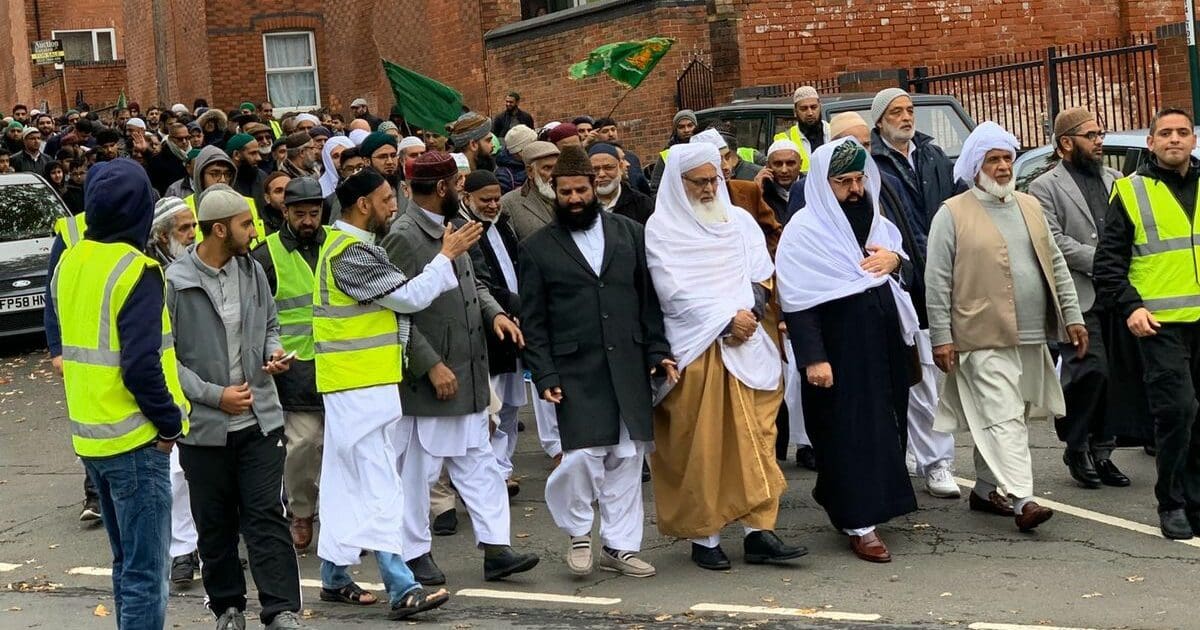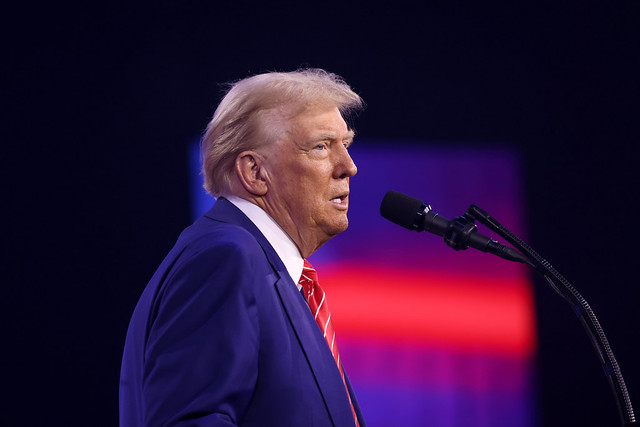
- This year, Leicester’s famous multiculturalism, so praised by the establishment, exploded. Knife attacks, stone- and bottle-throwing, cars torched, religious symbols under siege, dozens wounded, including policemen…. Then the hunt for Hindus began in Britain’s streets.
- “Leicester to be first city where white people are minority,” announced The Independent in 2007. Some understood that it would not end well.
- What happened? Leicester became Islamized fast. In 2001, the Muslim population was 11%. By 2017, it made up 20%. Among children, Islam is dominant.
- For the first time since the 7th century AD, England is no longer majority Christian.
- A British bishop, the brave Michael Nazir-Ali, was attacked for denouncing the existence of “no-go areas” in the UK.
- No one knows what Britain will be like in 30 years. We might, however, be concerned about a scenario in which large parts of the UK and Europe could resemble Pakistan.
Giulio Meotti, Cultural Editor for Il Foglio, wrote the following article for Gatestone Institute. He is an Italian journalist and author.
Great Britain: Multiculturalism and Islam Turn It Upside-Down
“Leicester has become the poster city for multicultural Britain, a place where the stunning number and size of the minorities – the 55 mosques, 18 Hindu temples, nine Sikh gurudwaras, two synagogues, two Buddhist centres and one Jain centre – are seen not as a recipe for conflict or a millstone around the city’s neck, but a badge of honour,” was how, in 2013, the British liberal newspaper The Independent celebrated the transformation of Britain’s tenth-largest city.
There are places in Europe that visited the future sooner than others: Malmö in Sweden, Trappes and Roubaix in France, Cologne in Germany, Molenbeek in Belgium, Leicester in England…
This year, Leicester’s famous multiculturalism, so praised by the establishment, exploded. Knife attacks, stone- and bottle-throwing, cars torched, religious symbols under siege, dozens wounded, including policemen. The burst of violence began after a cricket match between India and Pakistan on August 28. According to the media, some members of the Indian community in Leicester celebrated with the call “Pakistan Murdabad” (“Death to Pakistan”). A Sikh was attacked in the street. Social media networks spread the false news that the victim was a Muslim. The house of a Hindu family celebrating the Ganesh Chaturthi holiday was attacked and social media went wild with the false news of a “premeditated attack against a Muslim.” According to another false posting, a Muslim girl was allegedly harassed by three Hindus. Then the hunt for Hindus began in Britain’s streets.
Just a year ago, Leicester was celebrated by the Institute of Historical Research in London as the most multicultural city in the UK.
“Here, everyone is a minority,” headlined The Guardian in 2010, rejoicing that “Leicester will soon become the first British city with a non-white majority”. Christianity had been replaced by Islam:
“Here, a Deobandi mosque, built in 2000, faces the Edwardian church of St Philip’s, started in 1909. The church’s congregation is about 30, mixed white, Indian and African; the mosque across the road holds 500 people. And on Fridays ‘it’s full: prostration room only, with another hundred outside on the pavement,’ says the rector of St Philip’s, Alan Race.”
“Leicester to be first city where white people are minority,” announced The Independent in 2007. Some understood that it would not end well. “Plural cities, opportunities or time bomb?” the Commission for Racial Equality headlined a conference seminar about Leicester.
What happened? Leicester became Islamized fast. In 2001, the Muslim population was 11%. By 2017, it made up 20%. Among children, Islam is dominant.
Data from the Office for National Statistics recently revealed that, in a major change since 1991, when ethnic minorities made up just over a quarter of the city, 59.1% of Leicester’s population comes from ethnic minorities. Minorities also make up more than half the population in Luton (54.8%) and Birmingham (51.4%), the second-largest city in the UK, where, 20 years ago, 70% of the population was native English. Leicester, Luton and Birmingham are among 14 large areas of England where people who identify as “white” now make up the minority, The Independent noted. The highest proportion are found in the London boroughs of Newham (69.2%), Brent (65.4%) and Redbridge (65.2%). Outside London, the highest proportion of non-whites is in Slough (64.0%), followed by Leicester (59.1%), Luton (54.8%) and Birmingham (51.4%).
The most popular name among those born in England in 2022 is Mohammed.
Fewer than half the people in England and Wales are now Christian, the recent census revealed, with atheism and Islam gaining ground. For the first time since the 7th century AD, England is no longer majority-Christian. That was 1,300 years ago, when the islands were converted from paganism to Christianity. In 2011, in the previous census, Christians numbered 59% of the population. Now, they number 46%.
Islam has quickly advanced on the religious scene. In the census of 2011, there were 2.7 million Muslims (4.9% of the population). In the 2021 census, there were 3.9 million Muslims (6.5%): an increase of 44% in just 10 years.
Nearly 10 years ago, the Daily Mail newspaper published an article about a church and a mosque a few meters from each other in the heart of London. At St George’s Church on Cannon Street Road there were no more than 12 people to celebrate mass. When the church was built in the 19th century it was designed to accommodate 1,230 worshippers. The numbers were similar in St Mary’s Church in Cable Street, which opened in October 1849. Built to seat 1,000 people, there were no more than 20 worshippers there. While the two churches were empty, the mosque in Brune Street Estate had a different problem:
“The mosque itself is little more than a small room rented in a community centre, and it can hold only 100.
“However, on Fridays, those numbers swell to three to four times the room’s capacity, so the worshippers spill out onto the street, where they take up around the same amount of space as the size of the near-empty St Mary’s down the road.”
Christianity is becoming a religion of the past; Islam appears that of the future. In 2015, the Spectator featured on its cover “The Last Christian”, in which an elderly lady was the only worshipper in a cathedral. The former Archbishop of Canterbury, Lord Carey, warned that Christianity “is a generation away from extinction”.
The UK, over which the late Queen Elizabeth reigned for decades, has gone with her.
We now face the aging and self-destruction of the Christian populations of Enlightenment and their religious and cultural traditions; the exponential growth of Islam; the elites celebrating multiculturalism rather than working for the integration of minorities, and overturned demographics. What could possibly go wrong?
Why shouldn’t the Victoria and Albert Museum and other British museums remove portraits of the Islamic prophet Mohammed so as not to offend Muslims? Why shouldn’t cinemas ban the viewing of films that “offend Islam”? Why shouldn’t cities approve public calls to prayer over the outdoor loudspeakers of minarets? Why, in areas where Islam is dominant, such as the London borough of Tower Hamlets, shouldn’t patrols be formed to enforce Sharia law on alcohol-drinkers and homosexuals? In Luton, there are schools where 95% of the students are Muslims. Why shouldn’t sharia courts be allowed to decide family issues? The former president of the UK Supreme Court, Lord Phillips, has said that English law must “incorporate” elements of sharia. Why shouldn’t Muslims protest against “Islamophobic professors“? Why shouldn’t Sky News black out the Charlie Hebdo cartoons about the prophet of Islam?
A British bishop, the brave Michael Nazir-Ali, was attacked for denouncing the existence of “no-go areas” in the UK.
An American writer for the Wall Street Journal, Andy Ngo, recounted a visit to Luton, population 225,000 and approximately 32% Muslim:
“At the Central Mosque, I met a friendly group of Punjabi-speaking young men. ‘You’ve come to see Luton?’ one struggled to ask me in English. The young men asked me to follow them through the town center.
“Within minutes, we walked by three other mosques, which were vibrant and filled with young men coming and going. We passed a church, which was closed and decrepit, with a window that had been vandalized with eggs…. All the businesses had a religious flair: The eateries were halal, the fitness center was sex-segregated, and the boutiques displayed ‘modest’ outfits on mannequins. Pakistani flags flew high and proud. I never saw a Union Jack.
“The men finally led me to a discreet building that housed a small Islamic center. They spoke privately to its imam. I was led upstairs to see him. The imam asked me if I was prepared to convert.”
Here is the situation today in major British cities and boroughs. The total population is listed on the left, with the Islamic percentage in parentheses:
- Birmingham, population 1,149,000: (29.9%)
- Leeds, 792,000: (7.8%)
- Sheffield: 584,000: (10.3%)
- Bradford: 536,000 (30.5%)
- Manchester: 553,000 (22.3%)
- Bristol: 467,000 (6.7%)
- Cardiff: 357,000 (9.3%)
- Leicester: 357,000 (23.5%)
- Nottingham: 331,000 (12.2%)
- Newcastle: 315,000 (10.3%)
- Blackburn with Darwen: 148,000 (35%)
- Fenland: 101,000 (12.2 %)
- Luton: 218,000 (32.9%)
- Slough: 164,000 (29.4% )
- Watford: 96,000 (13%)
- Pendle: 91,000 (26%)
- Oldham: 237,000 (24.3%)
- Rochdale: 211,000 (18.8%)
- Kirklees: 438,000 (19%)
- Barking and Dagenham: 211,000 (24.4%)
- Brent: 331,000 (21.4%)
- Newham: 352,000 (34.8%)
- Redbridge: 303,000 (31.3%)
- Tower Hamlets: 319,000 (39.9%)
- Westminster: 261,000 (20%)
And now let us imagine these cities in 10, 20, 30 years. The Muslim total population in Britain is estimated to be 13 million by 2050. According to Ed Husain, one of the leading Muslim intellectuals in the United Kingdom:
“With almost five million Muslims, there are thousands of new buildings with domes and minarets and in the decades ahead, mosques are predicted to mushroom across the whole land.”
Nothing to worry about. Half of the mosques in the UK are affiliated with the Deobandi movement, adhering to the same Hanafi school of law that created the Taliban in Afghanistan.
Soon, half of Birmingham’s population will also be Muslim. “There were 301,000 Muslims in Birmingham in 2018, making up 27% of the local population,” wrote the Birmingham Mail in 2019. “The number of Muslims has risen by 21% from 249,000 in 2011.” The same newspaper noted that Muslim children in the city now outnumber Christian ones.
“In the working-class district of Small Heath, in the eastern part of the city, 95 per cent of the population is Muslim,” Le Figaro reported in 2017 about Birmingham.
“Some shops have different closing times corresponding to those of the daily prayers… The bookstores are religious. Travel agencies guarantee ‘Muslim friendly’ holidays with destinations where customers – especially female customers – are offered access to facilities with non-mixed spaces and swimming pools where women can swim and ‘preserve modesty'”.
No one knows what Britain will be like in 30 years. We might, however, be concerned about a scenario in which large parts of the UK and Europe could resemble Pakistan. Brexit or not, that would be the end of Britain as we know it.
Conquered: Islamization of Great Britain, There is No Turning Back - RAIR (rairfoundation.com)


No comments:
Post a Comment